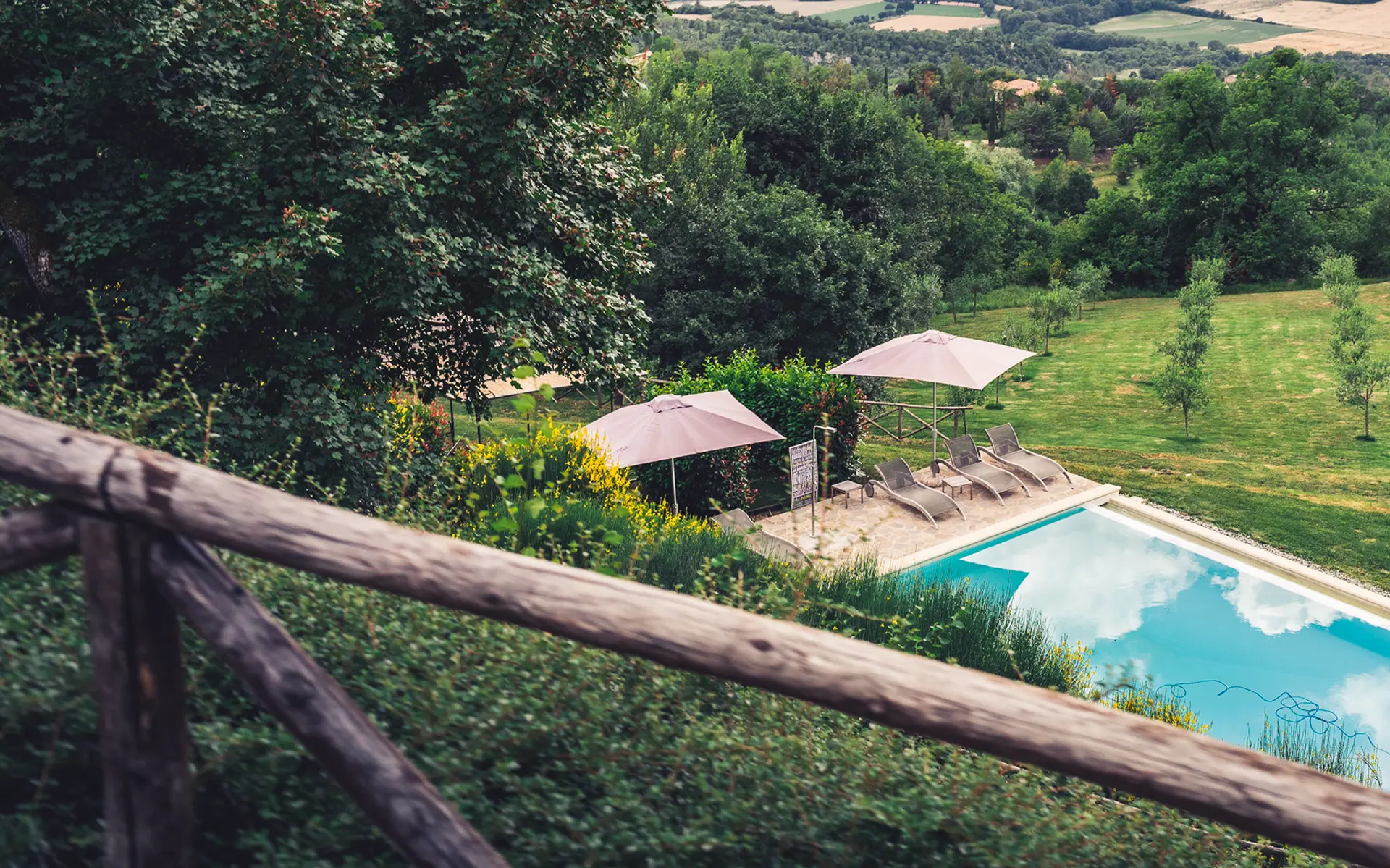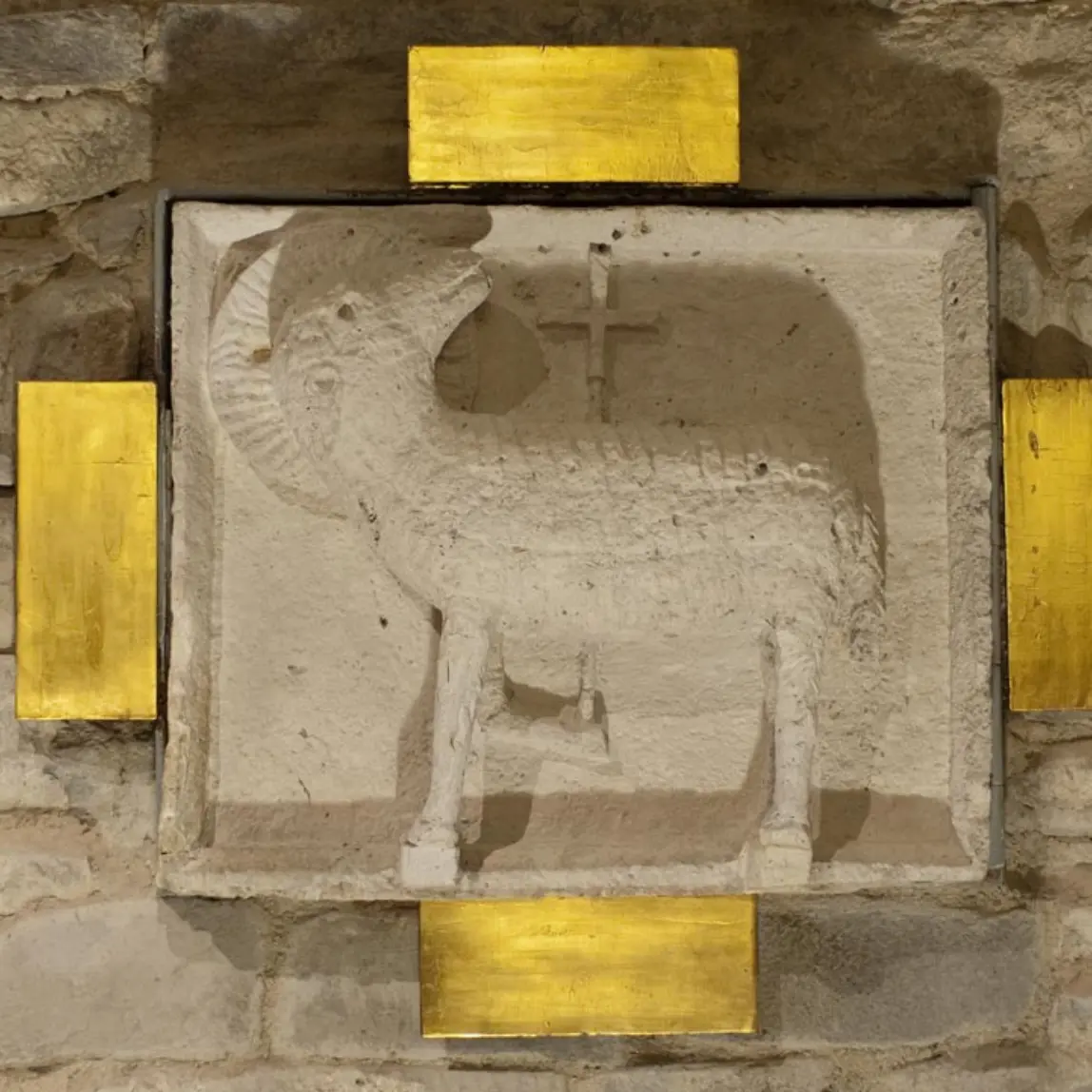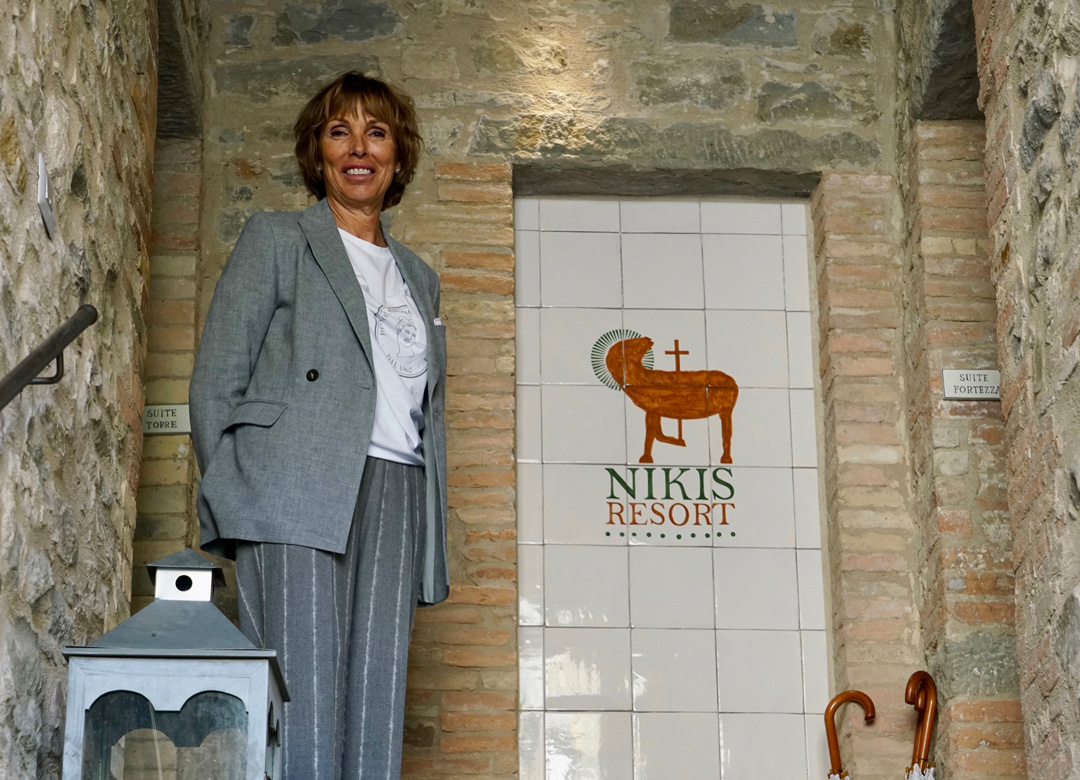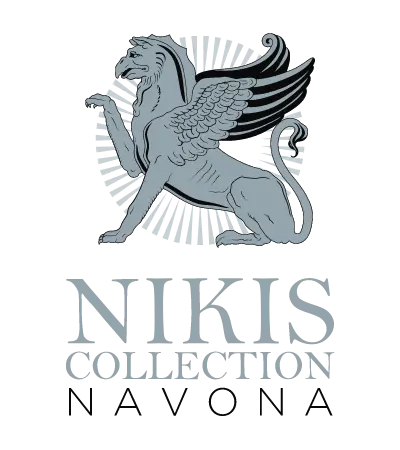
An ancient village from 1137
Beautiful sunsets over the Umbrian-Tuscan hills
Historical background
The complex dates back to 1137 as recorded in a bull by Pope Innocent II addressed to a certain Benedict who was in charge of the San Mariano rectory of Gubbio Cathedral. In this bull, the pontiff reiterated that several parishes scattered throughout the diocese belonged to the presbytery, including one called “Plebem Santctae Mariae de Algnana”. At the time, Pieve meant the church where baptisms could be celebrated, so much so that the one in Agnano had a baptismal font that is now on display in the diocesan museum in Gubbio. It seems that the origin of the Pieve di Santa Maria di Agnano dates back much further, to 416 A.D. to be precise, and this is derived from a decree by Pope Innocent I to the Bishop of Gubbio, Decenzio, referring to cults and rites practised in the church.
The Nikis Resort logo depicts a Lamb holding a cross. The lamb, which is a symbol of peace, identifies the church of Pieve d’Agnano (agnus) identified by a low stone relief dating back to 800 A.D. This low relief is now in custody at the Church of Camporeggiano located at the foot of the valley below the complex we manage. This low relief will have to return to the custody of the original church from which it was removed in order to defend and safeguard it.

Winners
"Bruno Barbieri 4 Hotel"
The sixth episode of Bruno Barbieri 4 Hotel – 2019 Edition took us to discover Umbria, the green heart of Italy, an oasis of peace among hills, woods and valleys. The winner of the challenge is the Nikis Resort.

The restoration of the buildings took place under the direction of the Superintendence of Monuments of Umbria, scrupulously adhering to the architecture of the period, intervening with normal maintenance works on the exteriors and radically inside, also restoring the frescoes. A radical environmental restoration was also carried out, retaining the original vegetation, garden layout and historic access routes.












